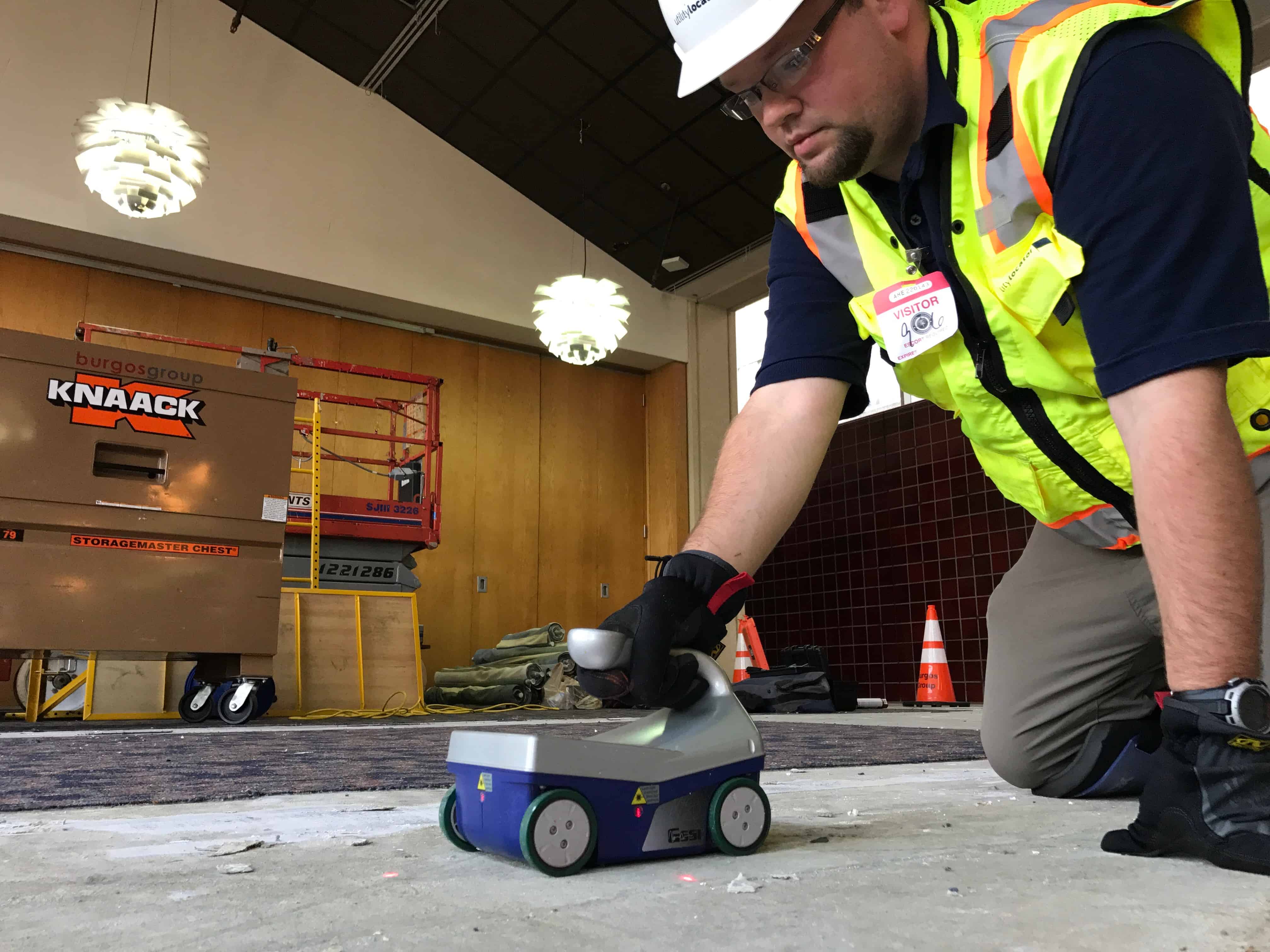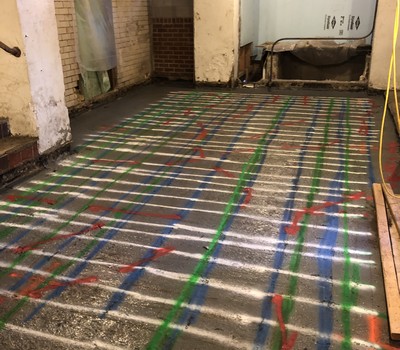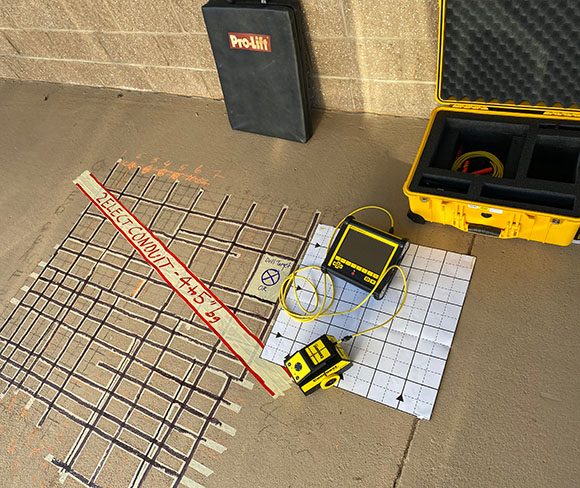Key Advantages of Using Concrete Scanning Modern Technology
Key Advantages of Using Concrete Scanning Modern Technology
Blog Article
Reveal the Transformative Power of Concrete Scanning in Maximizing Performance and Security
Concrete scanning has actually become a crucial device in the building market, providing unrivaled benefits in improving job performance and making certain safety requirements. By utilizing advanced technology, concrete scanning allows experts to see beyond the surface, revealing surprise intricacies that can influence the architectural stability of a building. The transformative power of concrete scanning exists in its capability to offer in-depth insights and real-time data, revolutionizing just how projects are prepared and performed. As we explore the ins and outs of this innovative method, a world of possibilities opens up, showcasing a new age of building practices that focus on accuracy and safety.
Significance of Concrete Scanning
Ensuring the architectural stability and security of construction tasks starts with the important step of carrying out thorough concrete scanning. Concrete scanning is a non-destructive approach utilized to spot and map subsurface elements within concrete frameworks. This process is crucial in recognizing potential hazards, such as rebar, post-tension cords, and avenues, that may be concealed within the concrete. By making use of innovative modern technologies like ground-penetrating radar (GPR) and electromagnetic induction, building and construction groups can properly situate these elements without creating any kind of damage to the structure.
The significance of concrete scanning can not be overemphasized, as it plays an important role in avoiding crashes, reducing task delays, and making certain the long-lasting toughness of the construction. By determining possible risks before the building and construction phase begins, contractors can execute suitable security measures and make educated choices concerning the style and implementation of the project. In addition, concrete scanning helps in optimizing job timelines and spending plan by avoiding unanticipated costs and hold-ups that might arise because of unpredicted obstructions within the concrete. Ultimately, investing in complete concrete scanning is an aggressive approach that enhances both effectiveness and safety and security in building projects.
How Concrete Scanning Works
Concrete scanning runs as an essential tool in building tasks by employing sophisticated innovations to spot and map subsurface elements without triggering architectural damages. Ground Penetrating Radar (GPR) and Electromagnetic Induction (EMI) are 2 key techniques made use of in concrete scanning. GPR works by producing high-frequency radar pulses right into the surface area, which recover when they encounter subsurface objects or voids. The time considered the signal to return suggests the depth and location of the objects. EMI, on the other hand, uses electromagnetic areas to recognize differences in material compositions, such as determining rebar or avenues within concrete structures.
Throughout the scanning procedure, the data accumulated is analyzed in real-time, permitting prompt identification of possible threats or challenges underneath the surface. By using these sophisticated innovations, concrete scanning considerably reduces the threat of costly damages and injuries on construction websites.
Advantages of Concrete Scanning
Using innovative scanning modern technologies in construction projects offers a multitude of advantages, boosting both efficiency and security on-site. One of the key benefits of concrete scanning is the capacity to discover and find ingrained items such as rebar, post-tension cable televisions, and channels precisely. By identifying these aspects before boring or reducing right into concrete frameworks, the danger of unintended strikes is substantially minimized, protecting against possible injuries to workers and damage to the structure itself. In addition, concrete scanning helps in planning and designing better, as it supplies exact info regarding the place and deepness of architectural components.

Instance Studies: Concrete Scanning Success

In another situation, a building and construction company used 3D concrete scanning to examine the condition of maturing concrete frameworks in a historical building. The in-depth scans offered beneficial insights into the degree of damage and helped prioritize upkeep efforts successfully. By proactively attending to areas of worry recognized via scanning, the company had the ability to extend the life expectancy of the framework and make certain occupant safety and security.
These case studies underscore the transformative power of concrete scanning in enhancing efficiency, precision, and security in building tasks.
Applying Concrete Scanning in Projects
Implementing advanced scanning innovations throughout construction jobs has ended up being significantly crucial for improving accuracy and safety. By integrating concrete scanning right into job preparation and execution, building and construction groups can recognize possible threats, such as rebar or post-tension wires, hidden within concrete frameworks. This positive method minimizes the danger of accidents, delays, and pricey rework, ultimately causing more reliable project timelines and budget plans.
To carry out concrete scanning successfully, project my link managers must collaborate carefully with skilled scanning experts to figure out one of the most suitable scanning strategies for the details job demands. Involving scanning professionals from the beginning of a job enables the group to produce detailed scanning plans that attend to vital areas of worry and make certain comprehensive data collection.
Furthermore, integrating concrete scanning into routine job process can simplify decision-making processes, as real-time scan information gives immediate insights right into the problem of concrete structures - Concrete Scanning. This data-driven technique assists in educated analytic and allows groups to make changes quickly, fostering a society of effectiveness and safety throughout the job lifecycle

Conclusion
To conclude, concrete scanning plays a crucial function in improving performance and safety and security in construction tasks. By utilizing sophisticated technology to map and identify out underlying frameworks within concrete, this procedure helps to stop costly mistakes, ensure architectural stability, and lessen dangers on site. why not try here With the capability to reveal hidden components and supply precise information, concrete scanning confirms to be a beneficial device for optimizing job end results and making best use of general success.
Concrete scanning is a non-destructive technique used to identify and map subsurface elements within concrete structures. Furthermore, concrete scanning aids in optimizing task timelines and budget by staying clear of unanticipated expenses and hold-ups that might develop due to unanticipated blockages within the concrete. One notable case research study involves a massive restoration project where concrete scanning played a vital function in making sure job success.In another case, a building and construction business utilized 3D concrete scanning to examine the condition of aging concrete structures in a historical building. By incorporating concrete scanning right into job planning and execution, building groups can identify possible threats, such as rebar or post-tension cords, concealed within concrete structures.
Report this page